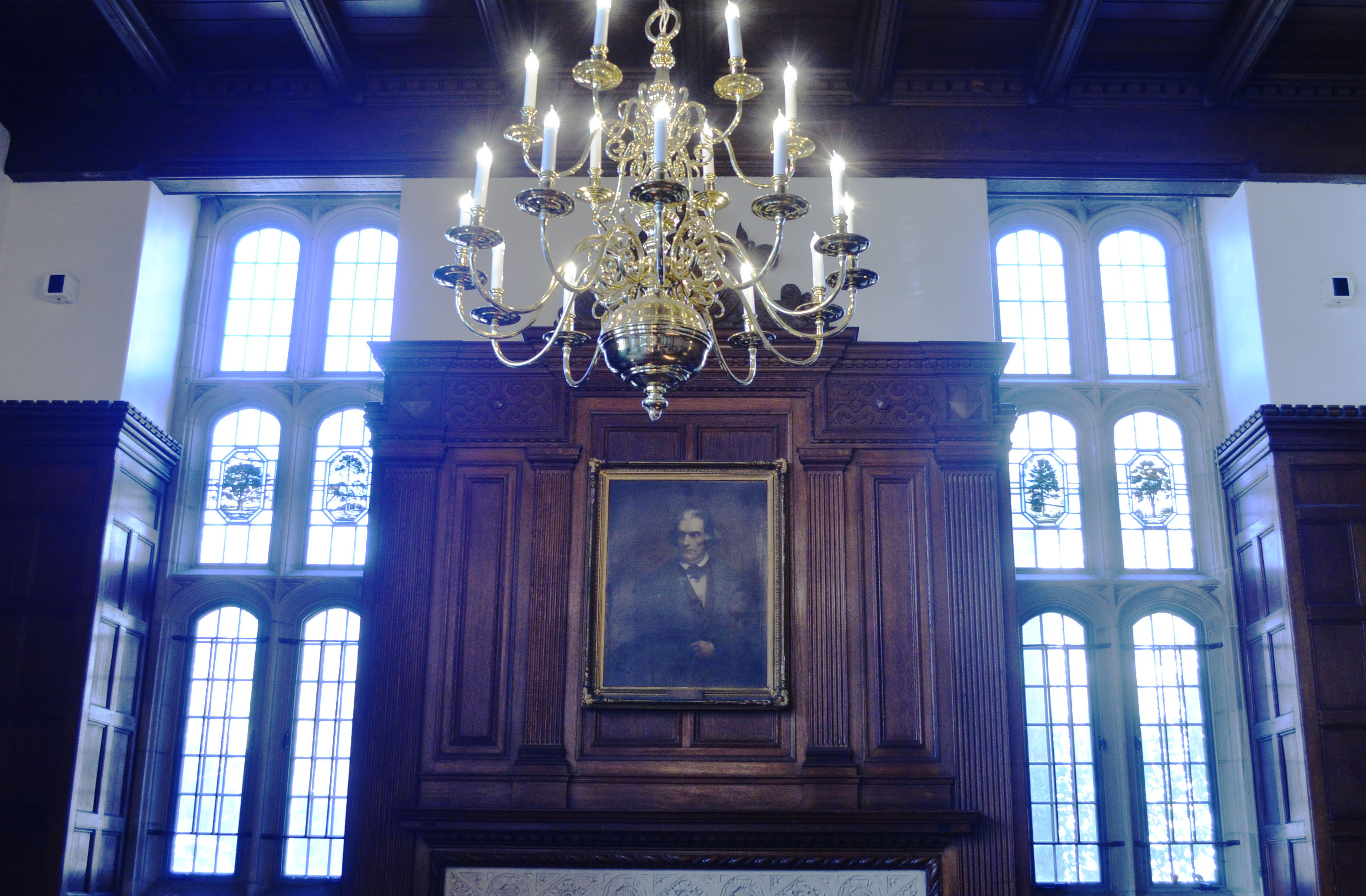
For decades, students in Calhoun College have eaten meals beneath the scowling portrait of former U.S. vice president and notorious slavery advocate John C. Calhoun, class of 1804, that hangs in the back of their dining hall. But early Friday — after months of race-related tension on campus, including an as-yet-unresolved debate over the naming of Calhoun — the controversial oil painting will be taken down.
In a Jan. 17 email to her college community, Calhoun Master Julia Adams announced plans to remove three portraits of Calhoun — one in the dining hall and two in the master’s house — that have hung in the college since the 1930s. Adams later told the News that after technicians from the Yale University Art Gallery remove the paintings, she intends to keep the wall space blank until the naming dispute is resolved. She laid out her plans following a period of renewed debate within the college, where conversation about the symbolism of the name Calhoun has picked up steam in the wake of a series of racially charged incidents on campus.
“We no longer need these aide-mémoires, Exhibits A (“the Glowering”) and B (“the Neck-bearded”), in our discussions and debates,” Adams wrote in the email, describing the portraits that hang in the dining hall and the living room of the master’s house.
Adams told the News that she decided to remove the portraits to address student complaints about the problematic racial symbolism of artwork that many in the college also find visually unappealing. The University is the ultimate owner of all work on display at Yale, including the paintings in the YUAG collections.
Adams added that she will consider a number of possible replacements for the portraits — including student artwork and professional paintings with racial-justice themes — once the University settles the naming dispute this spring.
“An empty space at this point actually befits the stage that we’re at in the conversation,” she said. “We are waiting for a decision now.”
The controversy over the naming of Calhoun began this summer after the racially charged shooting of nine African-American churchgoers in Charleston, South Carolina prompted nationwide discussion of Confederate symbols. University President Peter Salovey dedicated his entire freshman welcome address to the debate, though student interest faded in the early weeks of the semester.
But the college naming issue drew fresh scrutiny this past fall, amid national headlines about the race-related controversies that have rocked campus since Halloween weekend. After Thanksgiving break, dozens of Calhoun students gathered in the dining hall for a small-group discussion session focused on the naming dispute, and last month nearly 200 students — about half the student population of Calhoun — filled out a survey on the topic that was passed on to Salovey and Yale College Dean Jonathan Holloway.
Jock Reynolds, the director of the YUAG, visited Calhoun on Wednesday to discuss the three portraits with Adams. After examining the paintings, which he said require significant cleaning, Reynolds agreed to place them in storage at the YUAG while the Yale Corporation — which has final jurisdiction over the college’s naming — weighs the naming dispute.
The three portraits are not the only objects in the college honoring the former vice president. As of this week, Adams said, the college dean will no longer use a ceremonial mace cane that once belonged to Calhoun. She added, however, that it is not within her power as master to replace the dining hall’s stained-glass windows, which depict slaves picking cotton, because they are part of the structure of the building. In 1992, in response to a student complaint, the college removed a panel from the stained-glass windows in the common room that depicted a shackled slave kneeling at Calhoun’s feet.
The plans for the paintings’ removal have received largely positive reviews from students and faculty interviewed. Two African American Studies professors who disagree on whether the college itself should be renamed both expressed support for removing the paintings.
Professor Gerald Jaynes, who argued against changing the college name at a debate hosted by the Yale Political Union in September, said he agrees with the decision to take down the paintings, because unlike renaming the college, it would not be “an erasure of history.”
And Classics Director of Undergraduate Studies Emily Greenwood, who took the opposite position at the YPU debate, said she, too, fully embraces the plan to replace the portraits.
“To adorn public spaces at Yale with portraits is to place a symbolic value on those portraits and, in the absence of critical engagement and critique, to tacitly endorse the legacy of those portrayed,” Greenwood said. “I welcome Professor Adams’ proactive decision to remove these portraits that cause disquiet to many residents of the college.”
She added that the college should create a museum space in which student curators gather symbolically problematic artwork, such as the Calhoun paintings, alongside pieces by contemporary African-American artists.
But the paintings, which have served as provocative backdrops in the debate over the naming of the college, are not universally loathed.
“It’s history, so it adds a sense of authenticity,” said Newlyn Joseph ’19, who added that he supports keeping the college name.
Still, Calhoun sophomore Jonah Pearl ’18 said the paintings should be removed because they create a toxic atmosphere for students of color. Pearl added that the paintings are in some ways more problematic than the college name because, as visual representations, they are more directly tied to Calhoun himself.
“Who wants to look at it anyway?” said Clio Byrne-Gudding ’19, gesturing to the painting in the dining hall. “It’s ugly.”
At the meeting with Adams, Reynolds echoed that complaint, noting that he has no plans to put the portraits on display at the YUAG.
“To tell you the truth,” he said, “I’m not sure they’re of such great aesthetic merit that they really belong in the collection.”







